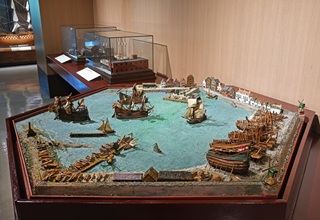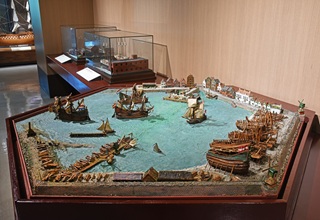Collections
World Lion Day on August 10th, the king of beasts in the Evergreen Maritime Museum

What is the shared emblem amongst Gryffindor from “Harry Potter”, the House Lannister of Casterly Rock from “A Song of Ice and Fire”, and the 2024 UEFA Euro runner-up England national football team? The answer is - “lion”.
Lions have long been a symbol of European royalty, appearing on flags, coats of arms, and even monarch titles, such as Richard the Lionheart, Louis VIII the Lion of France, and Napoleon the Lion of the Wilderness. We can see that lions not only ruled the land but also made their mark at sea.
During the 15th century, the expedition ships of Christopher Columbus was sponsored by the Spanish Queen Isabella. Therefore, Columbus flew the “Castle and Lion” flag on his ships representing his sponsor. Besides flags, the lions adorned the ship prows and sterns also symbolic their identity.
Moreover, the only surviving 17th-century Galleon, the Swedish Vasa, features a 3-meter-tall lion on its bow, representing King Gustavus Adolphus, the Lion from the North.
In addition, there is a model of the Harbor of Cape Horn at the 5th Floor of Evergreen Maritime Museum, which exhibits Dutch Republic lions on the sterns of the ships. Cape Horn was a vital base for the Dutch East India Company, which established Fort Zeelandia in Tainan, Taiwan, suggesting these lions might have “visited” Taiwan.
There are still other lions hidden in our museum, such as on the Egyptian, Chinese, and British Ships. We invite you to embark on this lion-hunting game through maritime history.

